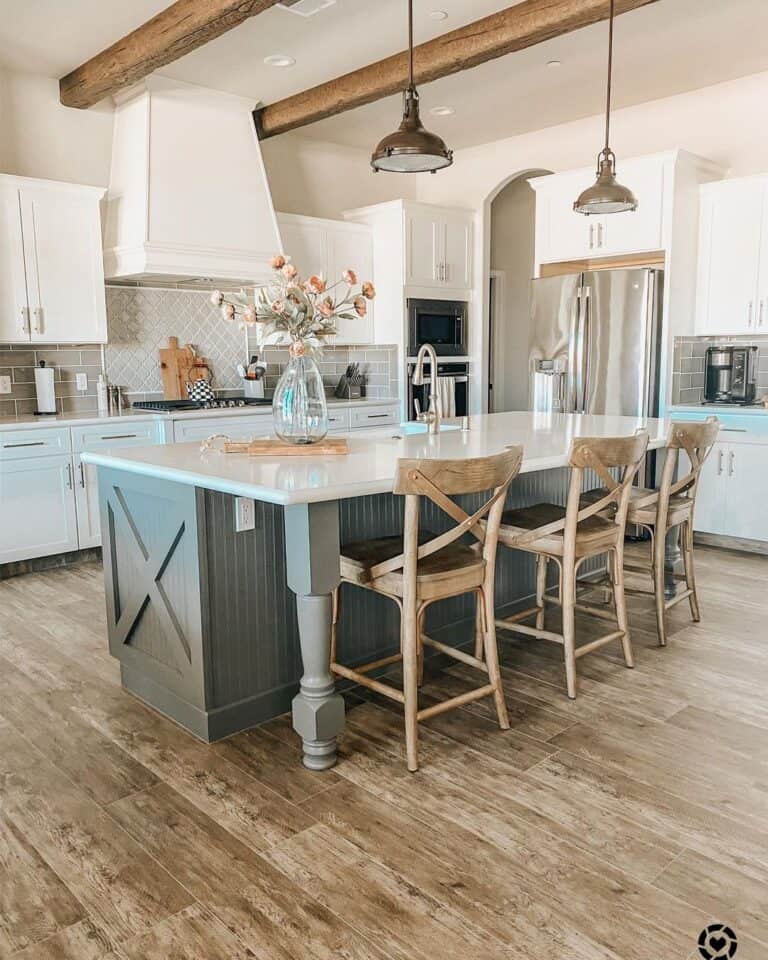Find Sturdy and Ornamental Legs For Kitchen Island Changes
Find Sturdy and Ornamental Legs For Kitchen Island Changes
Blog Article
Important Factors to Consider When Picking Legs For Cooking Area Island
Choosing the appropriate legs for a kitchen area island entails a cautious analysis of multiple aspects that can significantly affect both capability and aesthetic charm. As we discover these elements, it ends up being clear that each choice can have far-reaching ramifications for the total kitchen experience.
Material Options
When choosing legs for a cooking area island, understanding the different product alternatives is important for attaining both visual appeal and structural stability (Legs For Kitchen Island). The selection of product significantly influences not only the longevity of the island but also its general style and functionality
Steel legs, usually made from stainless steel or functioned iron, add a industrial and modern feeling while making certain longevity and security. These products are resistant to wear and can support significant weight, making them excellent for bigger islands.
One more choice is engineered products, like MDF or plywood, which can be a lot more economical while still providing a range of finishes. Nonetheless, they might not offer the same degree of stability as solid timber or metal. Materials such as acrylic or glass can create a modern look, though they might require added support to ensure security.
Ultimately, the option of material for cooking area island legs must align with the wanted capability and the total theme of the cooking area.
Design And Style

When considering style, the form and surface of the legs are vital. Conical legs can offer a feeling of agility and elegance, while thicker, more robust legs can communicate stamina and stability. Additionally, the surface-- be it painted, stained, or natural-- should enhance the kitchen cabinetry and kitchen counter products to produce a unified look.
Furthermore, the design of the legs can also mirror individual taste. Customized or decorative legs, such as those including detailed carvings or distinct geometric shapes, can offer as prime focus, adding character and individuality to the cooking area. Eventually, the best choice will certainly not only enhance capability however also boost the visual appeal, making the cooking area island a standout function of the home.
Height Factors To Consider
Selecting the ideal height for cooking area island legs is essential, as it straight influences both functionality and convenience. The standard height for a kitchen area island normally ranges from 36 to 42 inches, lining up with usual countertop heights.

It is likewise important to make up users' elevations and preferences. Customizing the elevation can make sure a comfortable experience for all member of the family, making the cooking area island a much more functional and delightful area.
Weight Assistance
Making sure adequate weight assistance for kitchen island legs is crucial for both safety and capability. The kitchen island usually serves numerous purposes, consisting of food preparation, dining, and added storage, demanding a robust support framework. When selecting legs, it is vital to consider the general weight ability required based on the island's planned usage and the materials that will certainly be positioned on it.
The choice of material for the legs plays a substantial duty in their weight-bearing capabilities. Strong timber, steel, and heavy-duty compounds usually provide remarkable toughness compared to lighter materials. Furthermore, the style of the legs-- whether they are right, tapered, or have a pedestal form-- can influence their capability to disperse weight properly throughout the structure.
Constantly get in touch with the supplier's requirements pertaining to lots restrictions to make sure that the legs can sustain the designated weight without compromising safety. In recap, picking kitchen area island legs with sufficient weight support is essential for developing a secure and practical cooking area.
Setup and Maintenance
Correct installment and maintenance of kitchen island legs are critical for making certain durability and stability. To start, read the full info here it is important to comply with the producer's standards during installation. This usually includes securing the legs to the space station utilizing appropriate bolts, guaranteeing that the legs are degree and lined up. Utilizing a degree tool can aid avoid tottering and improve the overall aesthetic appeal of the cooking area island.
As soon as installed, routine upkeep is required to maintain the integrity and appearance of the legs - Legs For Kitchen Island. For wood legs, periodic cleaning with a moist cloth and application of suitable timber gloss can avoid moisture damage and preserve their coating. Steel legs may need a mild cleansing solution to eliminate oil and crud, followed by a dry discover this info here fabric to avoid rust formation
Furthermore, check the legs regularly for signs of wear or damage, such as cracks or loose joints. Tightening check my reference screws or bolts as needed can also prolong the lifespan of the legs. By adhering to these installation and maintenance techniques, homeowners can ensure that their kitchen island remains sturdy and aesthetically appealing for several years ahead.
Verdict

Visual comprehensibility is extremely important in selecting the style and design of legs for a kitchen area island, as these aspects considerably affect the total setting of the room. Conical legs can provide a sense of lightness and elegance, while thicker, much more robust legs can convey stamina and stability.Choosing the suitable height for kitchen island legs is important, as it directly affects both performance and comfort. In summary, selecting kitchen island legs with adequate weight assistance is essential for developing a useful and risk-free culinary space.
In conclusion, picking legs for a cooking area island demands cautious consideration of various factors, consisting of product choices, style, height, weight assistance, and setup.
Report this page